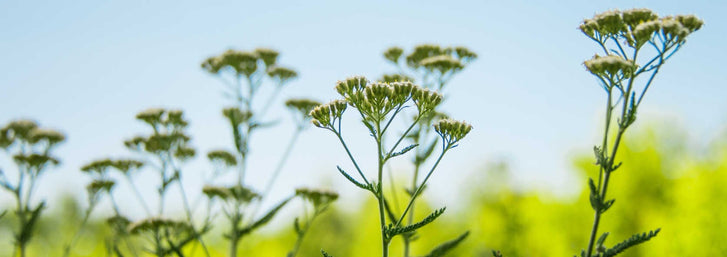
Ashleigh Smith

Broccoli Raab is a very interesting vegetable, most commonly used in Italian and Chinese Cuisine. Even though its name includes broccoli it is more closely related to mustards and turnips with bitter flavored leaves and flowers, sharper than the traditional broccoli.
You may have never heard of this plant before. That's not uncommon though as it isn't very common to North American cuisine.
Even though this vegetable is used for cooking there isn’t nearly as much information out there about it as say, tomatoes. So we are here to help you understand what it is and why you might be interested in growing it.
Broccoli Rapini isn’t it's only name. Itis recognized by several names including: Broccoli rabe, rapa, rapine, rappi, rappone, fall and spring raab, runip broccoli, taitcat, Italian or Chinese Broccoli, broccoli rape, broccoli de rabe, Italian turnip, and turnip broccoli. In Italy it is commonly known as Broccoli Asparago.
Broccoli Raab is recognized by its lack of a central head while still developing floweretts with a very similar appearance to broccoli, giving it this misleading name. Unlike the broccoli you are familiar with, Broccoli Rapini is mostly grown for the foliage which is high in vitamins A, C, K, and potassium.
It should be harvested just as the flower buds form, or as a microgreen. Harvesting as soon as the buds are forming is important as this plant will bolt quickly. For a harvest throughout the season, make successive plantings.
Planning ahead is important as these leaves do not keep for more than 1-2 weeks after being cut. The ideal seasons for these plants are fall to spring as they also favor the cooler temperatures.
To Cook Broccoli Raab:
- Rinse
- Cut off the bottom of the stems
- Cut stalks crosswise into 2 inch pieces
- Boil for 1-2 minutes
- Saute in olive oil 3-5 minutes
- You may also prepare it in a stir-fry or steamed
About the Author

I'm Ashleigh Smith, a native to Northern Utah. I first gained a love of gardening with my grandmother as I helped her each summer. I decided to make a career of it and have recently graduated with a Bachelor's degree in Horticulture from Brigham Young University - Idaho. My studies have focused on plant production while I also have experience in Nursery & Garden Center Operations.
Become a True Leaf Market Brand Ambassador! You’ll enjoy awesome perks, free products and exclusive swag & offers! Help us create a gardening revolution and help others experience the joy of growing!
Leave a comment
Your email address will not be published. Required fields are marked *
1 comments
James Raimondi
I am interested in being a better gardener and helping our community grow more sustainable food
Further Reading

10 Natives of the Southwest USA for Pest Control
Written By Lara Wadsworth The Southwestern United States is a region incredibly unique to the rest of the country. The hot, dry weather can be challenging for plants and animals to thrive without additional help. That is why gardening with natives can ...

Ashleigh Smith
2024-04-157 min read0
Spring Into Action - Celebrating Earth Day
Written By Chelsea Hafer Spring is quickly arriving, and that means that Earth Day is near! Earth Day is the perfect occasion to appreciate our wonderful planet and all that it does for us and think of ways you can give back to it. In this blog post, w...

Ashleigh Smith
2024-04-154 min read0
Everything You Need To Know About Rain Gardens
Written By Lara Wadsworth Rain gardens are quickly gaining popularity for their perfect marriage of utility and beauty. What simply looks like a beautifully landscaped garden is actually a native habitat that serves as a storm drain and water sponge. B...

Ashleigh Smith
2024-04-085 min read1
Northeastern Natives for Attracting Beneficial Insects
Written By Lara Wadsworth The Northeastern United States is rich with American history, but did you also know that it is rich in plant biodiversity? Nature has learned through time how to work in harmony with the various species that attempt to thrive....

Ashleigh Smith
2024-04-086 min read1



